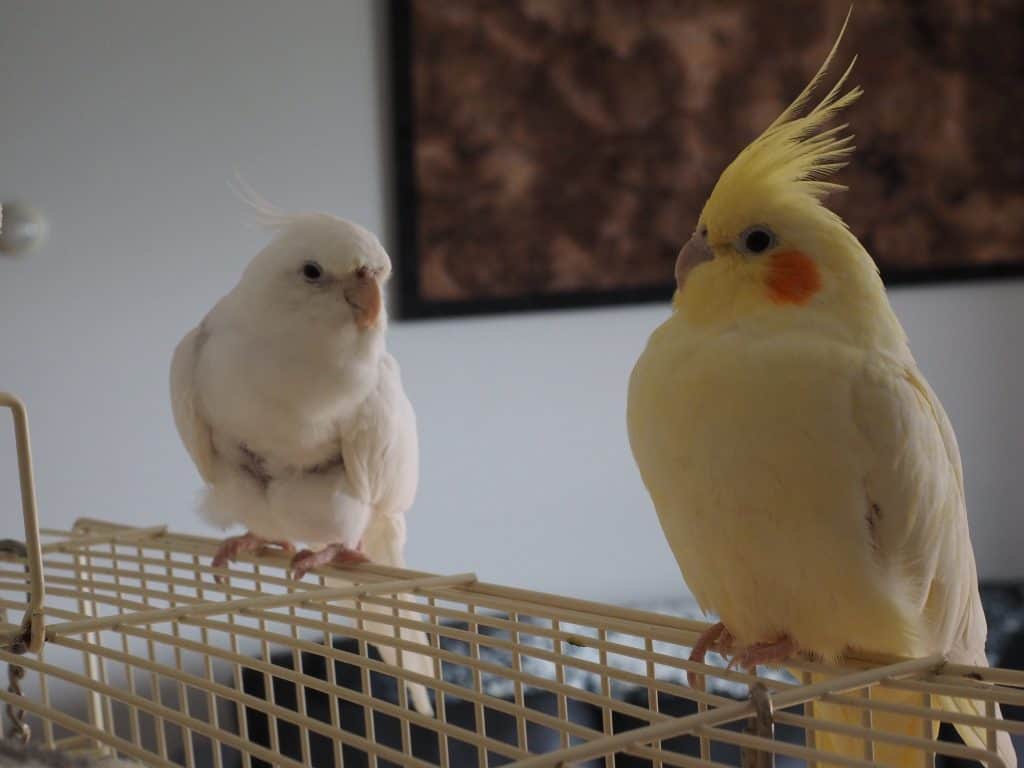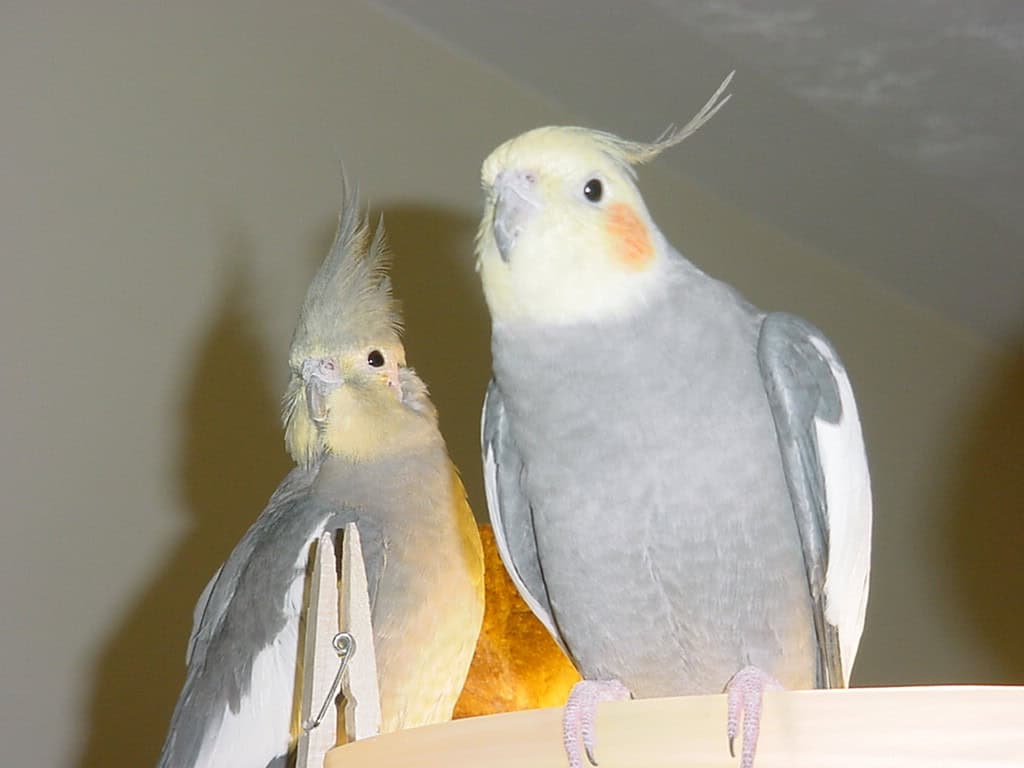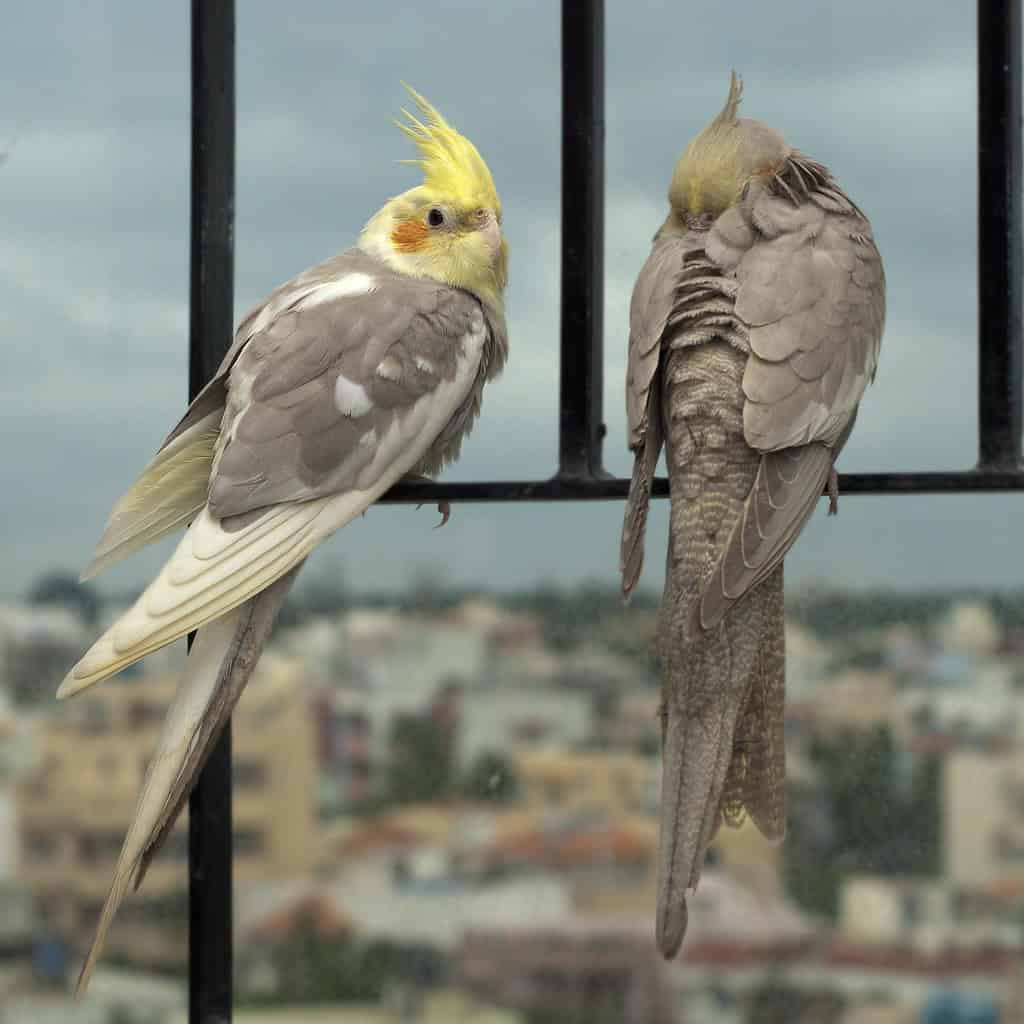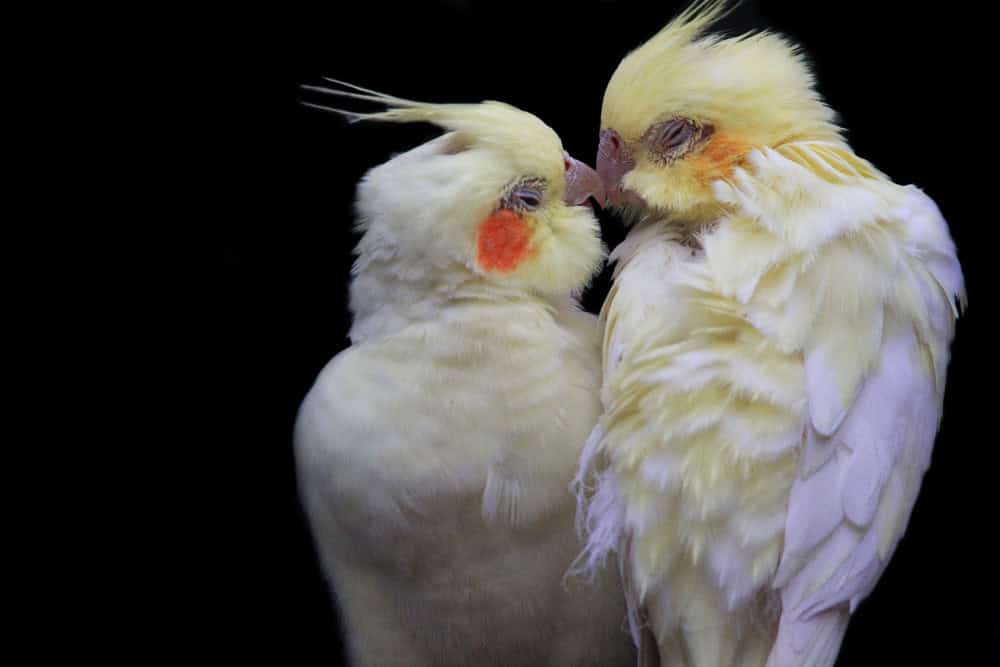Determining the gender of your feathered friend can be quite the puzzle, especially when it comes to cockatiels. Sexing a cockatiel isn’t always straightforward, as they lack the vivid color differences that other birds exhibit. Whether you’re a seasoned bird owner or just starting out, understanding the subtle cues can help you better cater to your pet’s needs.
You might wonder why knowing your cockatiel’s sex matters. From behavior to breeding and even health care, the differences between male and female cockatiels can influence how you interact with and care for your bird. Let’s dive into the nuances of sexing a cockatiel, ensuring you’re equipped to provide a nurturing environment tailored to your bird’s specific requirements.
Identifying the Gender of Your Cockatiel

Identifying the gender of your cockatiel involves recognizing subtle visual and behavioral differences. This distinction is crucial for optimizing care tailored to each gender’s specific needs.
Visual Differences
Male and female cockatiels often display slight variations in their physical appearance, which can help you determine their sex. For the first molt, look at the tail feathers and the underside of the wings. Male cockatiels commonly lose the barring patterns on their tail feathers, which typically happens after the bird reaches six to nine months, while females retain these barring patterns throughout their lives.
Additionally, male cockatiels may exhibit a more vibrant yellow face than females, especially notable in certain color mutations such as the normal grey or pied varieties. It’s important to consider these visual cues closely, as they are amongst the most reliable indicators of gender in adult cockatiels.
Behavioral Clues
Behavioral differences between male and female cockatiels are often more evident than visual distinctions. Males tend to be more vocal and may exhibit behaviors such as whistling and calling more frequently and loudly than females. These vocal displays are often used to attract mates or express contentment. On the other hand, female cockatiels generally display quieter and more subtle vocalization.
They are also more likely to engage in nesting behaviors, such as shredding paper or seeking dark, enclosed spaces within their environment. Recognizing these behaviors can provide additional clues to help you determine the gender of your cockatiel, especially when visual indicators are ambiguous.
Common Methods for Determining Sex

Determining the sex of your cockatiel involves a few reliable methods. Each technique provides a different level of certainty and may require varying degrees of involvement from professionals. Here’s a closer look at the most common methods used to differentiate male from female cockatiels.
DNA Testing
DNA testing stands as the most accurate method for sexing cockatiels. This method involves collecting a sample of your bird’s feathers or blood and sending it to a laboratory. The DNA is then analyzed to identify the sex chromosomes. Results from DNA testing are highly reliable and are especially useful if your bird’s physical characteristics and behavior don’t clearly indicate its sex. Most bird owners find this method appealing because it’s non-intrusive and delivers definitive results, although it may come with a higher price tag compared to other methods.
Surgical Sexing
Surgical sexing, although less common today due to advancements in DNA testing, is a method where avian veterinarians perform a minor surgical procedure known as endoscopy or laparoscopy. Under anesthesia, a small incision is made and a camera is inserted to visually inspect the internal sex organs. This approach provides definitive results and allows for a visual health check of other internal organs. However, given that it’s invasive, you must consider the potential risks and recovery time. Ensure that this procedure is done by an experienced avian vet to minimize risks.
Behavioral Observations
Observing the behavior of your cockatiel can also offer clues to its sex. Male cockatiels are generally more vocal and display more elaborate singing and calling behaviors, particularly during mating seasons, compared to females. Females might exhibit more nesting behaviors, such as shredding paper or arranging the cage bedding. Keep in mind, behavioral observations might not be as reliable as other methods since they can vary widely among individual birds. This method works best in conjunction with another, such as DNA testing, to increase certainty about your cockatiel’s sex.
Age-Related Differences in Sexing Cockatiels

Age plays a significant role in determining the sex of cockatiels, especially when visual and behavioral cues are used. For young birds, sexing can be particularly challenging as many physical differences aren’t yet developed. However, as cockatiels grow and transition into their adult plumage, some age-related characteristics begin to emerge, assisting in the sex identification process.
In cockatiels, the first molt occurs at about six to nine months of age. This molt can be a useful indicator for sexing young males and females. Male cockatiels often lose the barred patterns on the underside of their tail feathers and develop more vivid coloration, especially in the face. In contrast, female cockatiels retain their barred tail feathers and generally have less dramatic changes in facial coloration. Observing these changes in adult plumage requires careful attention, as they might not be distinctly evident in all birds.
Furthermore, male cockatiels may begin to exhibit behaviors typical of adult males, such as more pronounced vocalization and territorial displays. These behavioral cues combined with changes in plumage after the first molt offer additional insights into their sex. However, these indicators aren’t foolproof. For increased accuracy, it’s advisable to combine observational methods with DNA testing or consult an experienced breeder or veterinarian.
Additional Considerations for Sexing Cockatiels
Factors Affecting Accuracy
While the methods mentioned above are useful, several factors can influence their accuracy. For instance, the visibility of plumage changes and behavioral differences may vary based on the cockatiel’s age, health, and individual temperament. Stress or illness can sometimes cause changes in behavior that might mislead sex determination. Always consider these factors when assessing your bird’s gender and seek professional advice if needed.
Understanding Hormonal Influences
Hormones play a significant role in the sexual dimorphism of cockatiels. In males, hormonal changes can lead to more pronounced color displays and vocal behaviors, particularly during the breeding season. Females may display nesting behaviors influenced by hormonal cycles, especially if they are in a breeding environment. Understanding these hormonal influences can help in recognizing gender-specific traits more accurately and can be particularly useful in combination with other sexing methods.
Environmental and Social Context
The environment and social interactions of your cockatiel can impact their behavior and appearance. For example, male cockatiels may be more vocal when they perceive a potential mate or rival. Socialization with other birds or humans can also influence their behaviors. Being aware of these contextual factors can help you make a more informed judgment about your cockatiel’s sex.
Additional Considerations for Sexing Cockatiels
Factors Affecting Accuracy
While the methods mentioned above are useful, several factors can influence their accuracy. For instance, the visibility of plumage changes and behavioral differences may vary based on the cockatiel’s age, health, and individual temperament. Stress or illness can sometimes cause changes in behavior that might mislead sex determination. Always consider these factors when assessing your bird’s gender and seek professional advice if needed.
Understanding Hormonal Influences
Hormones play a significant role in the sexual dimorphism of cockatiels. In males, hormonal changes can lead to more pronounced color displays and vocal behaviors, particularly during the breeding season. Females may display nesting behaviors influenced by hormonal cycles, especially if they are in a breeding environment. Understanding these hormonal influences can help in recognizing gender-specific traits more accurately and can be particularly useful in combination with other sexing methods.
Environmental and Social Context
The environment and social interactions of your cockatiel can impact their behavior and appearance. For example, male cockatiels may be more vocal when they perceive a potential mate or rival. Socialization with other birds or humans can also influence their behaviors. Being aware of these contextual factors can help you make a more informed judgment about your cockatiel’s sex.
Regular Health Check-Ups
Regular health check-ups with an avian veterinarian are beneficial not only for sex determination but also for overall well-being. A vet can provide insights into physical changes and behaviors that may indicate gender. They can also perform or recommend appropriate testing methods and ensure your cockatiel’s health is optimal, which can aid in accurate sexing.
The Importance of Proper Care
Once you determine the sex of your cockatiel, tailor its care to its specific needs. Males may require more enrichment activities and mental stimulation to channel their energy and vocal tendencies, while females might benefit from additional nesting materials and a quiet, secure environment. Understanding these requirements helps in creating a nurturing habitat that supports your cockatiel’s physical and emotional well-being.
- EASY TO USEEasily hooks on to cage for convenient use.
- MATERIALAdopting the natural calcium stone, non-toxic and no harmless.
- SAFE AND HEALTHYCompletely safe to chew and promotes clean and healthy teeth.
- FUN TO REST AND GRINDCan be arbitrarily placed in cages, your little pets will gnaw by themselves.
- COLORFUL DESIGNVibrant colors can better attract the attention of birds, prevent parrots from getting depressed and yelling or biting.
Enhancing Your Understanding of Cockatiel Sexing
Genetic Variations and Color Mutations
Understanding genetic variations and color mutations in cockatiels can provide further insight into sexing your bird. Cockatiels come in a variety of color mutations, such as the pied or albino varieties, which can influence their plumage patterns and colors. These mutations might affect the visibility of the typical sex-based characteristics, making it more challenging to differentiate males from females. Familiarize yourself with the specific traits of your cockatiel’s color mutation, as this knowledge can aid in interpreting visual cues more accurately.
The Role of Behavior in Sex Identification
Behavioral observation remains a valuable tool in sexing cockatiels, but it’s important to consider context. Males are known for their elaborate courtship displays, which can include mimicking sounds and performing physical displays. These behaviors are most pronounced during the breeding season but can occur throughout the year. Conversely, females may exhibit more subdued behaviors, focusing on nesting or preening. By noting these behaviors in various contexts, you can improve your accuracy in determining your cockatiel’s sex.
The Benefits of Professional Consultation
When in doubt, consulting a professional can be incredibly beneficial. Avian veterinarians and experienced breeders can offer expert advice and accurate sexing methods, including the use of advanced diagnostic tools. They can also help you understand how to interpret your cockatiel’s physical and behavioral traits in the context of its overall health and environment.
Long-Term Considerations
Once you have determined the sex of your cockatiel, it’s essential to recognize that both males and females have unique needs and preferences. Tailoring their environment, diet, and enrichment activities according to their sex can enhance their quality of life. Regularly revisiting your bird’s care routine and making adjustments based on its evolving needs will contribute to a happier, healthier pet.
Conclusion: Sexing a Cockatiel
Determining the sex of your cockatiel can be complex but understanding the nuances of their development and behavior is crucial. By utilizing a combination of DNA testing, expert consultation, and keen observation of your bird’s physical and behavioral traits, you’ll enhance your ability to make informed care decisions. Remember the distinct differences in coloration and patterns that emerge as cockatiels mature and use these insights to better understand and care for your feathered friend.
Other suggested articles:




